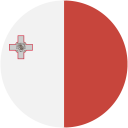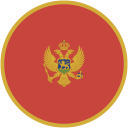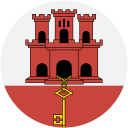
Shiny Shields
“Come back with your shield - or on it”
– Plutarch, Moralia.
Shields, a defensive tool repurposed throughout the millennia. Delve into the fascinating history of shields, dating back to before the pyramids were constructed. We'll explore how shields were made in ancient times and how various cultures influenced their design and functionality. Explore some of the most famous tactics enabled by shields and, as any soldier would, learn how to care for, and maintain, your equipment.
Historical Evolution of Shields
Throughout history, shields have been a warrior's most trusted companion, evolving from humble beginnings into sophisticated tools tailored to the battlefield. Can you imagine the early Mesopotamians and Egyptians wielding lightweight leather and wood shields that prioritised agility? These early designs lay the groundwork for the iconic Greek hoplon, a rounded shield that wasn't just personal protection but a vital component of the powerful phalanx formation. And what about the Romans, always the innovators, who took things further with the scutum? This large rectangular shield transformed legionnaires into an impenetrable wall, like the famed testudo formation, effectively shrugging off enemy volleys.
In European Middle Ages, knights embraced change. They traded cumbersome shields for the kite shield, a design perfectly suited for mounted combat, while foot soldiers opted for the smaller, more manoeuvrable heater shield. Tournaments and battles alike saw knights wielding these shields with grace and skill. As metallurgy advanced in the late medieval period, metal shields emerged, offering superior protection and transforming into canvases for heraldry. These shields became more than just tools; they were symbols of status and lineage, a testament to their dynamic role in shaping warfare strategies throughout history.

Shields
Headline

Tactics and Formations
Shields are key players in some of the most ingenious military tactics ever devised.
Think about the Greek hoplites, famous for their phalanx formation. This wall of bronze relied heavily on the hoplon, a cleverly designed round shield. Imagine them locking their shields together side-by-side, creating an almost impenetrable barrier. As they advanced in unison, the enemy's attacks would bounce right off! The phalanx was a marvel of its time, a testament to how a simple shield could be transformed into a powerful offensive tool.
The Romans took shield tactics to the next level with their testudo formation. Picture a mobile fortress – soldiers interlocking their large rectangular scuta shields in front and overhead. This ingenious strategy protected against arrows and other attacks, making them a nightmare to deal with during sieges or storming fortified positions.
Moving north, we see the Vikings using shields in a similar way. Their shield walls were a masterclass in both offence and defence; standing shoulder-to-shoulder, shields overlapping, creating a nearly unstoppable force. This tactic allowed them to keep the pressure on their enemies while they advanced or held their ground. The curvature of their shields was also effective in deflecting incoming attacks, such as sword or axe strikes, away from the body rather than absorbing the full impact directly. The round shape also allowed for easier movement and manoeuvring in battle. Warriors could rotate the shield to deflect blows from different angles quickly.
With the invention of the crossbow during the Middle Ages, came another use for the shield. The pavise, a large, convex shield allowed crossbowmen to hide behind them, as they could stand upright on their own! This allowed the crossbowmen to reload safely behind a wall of protection before unleashing another volley of deadly bolts. The pavise shield became an essential part of the medieval battlefield, and so did the Buckler, a small round shield typically up to 45 cm in diameter, used by archers. The buckler provided a means of defense against melee attacks when inevitably the archers got in range of foot soldiers' swords. Its small size and light weight allowed for quick and agile movements to parry or block blows and the metal boss and rim could be used to strike opponents, giving archers a tool for both defense and attack when they were unable to use their bows.
However, it was possible to shoot around pavise shields!
See how Lars Andersen shoots around an obstacle with a Turning Arrow in this video!
Shield Crafting Techniques
Shield crafting – it's a fascinating journey that mirrors the evolution of warfare itself! Let's travel the world and see how shields transformed across cultures with incredible diversity in design. All stemming from how each civilisation fought, the environment they battled in, and what materials they had on hand.
The Greek hoplon, an ingenious convex shield, wasn't just wood – it was layered with bronze, a clever trick that made it both lightweight and tough. This layering technique, called lamination, was key. It allowed the hoplon to absorb the shock of a blow without weighing the soldier down.
For the Vikings – their round shields were no afterthought. These shields were constructed with wood planks cleverly joined together and covered with leather or rawhide for durability, often painted in vivid colours. They'd even add a central metal boss,. like a built-in shield guard, for a better fit with an un-armoured forearm. Every step in these crafting methods reveals the incredible thoughtfulness of these ancient artisans. They weren't just building shields; they were creating tools perfectly tailored to the fighting styles of their era. Luckily, some of this has been documented, through, for instance the Oseberg Tapestry, which Epic Armoury used to create the GastiR Shield in collaboration with Lejre Land of Legends, a Danish centre for historical-archaeological research and communication.
In Africa, the Zulu had massive oval shields made of cowhide. These weren't just for deflecting blows but also powerful symbols of the Zulu tribe's identity. They used them in battle, of course, but also in ceremonies and displays of tribal pride.
Across the ocean, Native American warriors took a different approach. Their shields were often small and round. These shields were like canvases decorated with symbols and stories with deep personal and tribal meanings. They believed these decorations offered spiritual protection alongside the physical barrier.
Learn how to customise your larp shield to display your colours like the knights of old.

 Denmark
Denmark
 United States
United States
 United Kingdom
United Kingdom
 Germany
Germany
 Sweden
Sweden
 Norway
Norway
 Åland
Åland
 Australia
Australia
 Austria
Austria
 Belgium
Belgium
 Brazil
Brazil
 Bulgaria
Bulgaria
 Canada
Canada
 Canary Islands
Canary Islands
 Chile
Chile
 China
China
 Croatia
Croatia
 Cyprus
Cyprus
 Czech Republic
Czech Republic
 Estonia
Estonia
 Faroe Islands
Faroe Islands
 Finland
Finland
 France
France
 Greece
Greece
 Greenland
Greenland
 Hungary
Hungary
 Iceland
Iceland
 India
India
 Indonesia
Indonesia
 Ireland
Ireland
 Israel
Israel
 Italy
Italy
 Japan
Japan
 Kuwait
Kuwait
 Latvia
Latvia
 Lithuania
Lithuania
 Luxembourg
Luxembourg
 Malaysia
Malaysia
 Malta
Malta
 Mexico
Mexico
 Montenegro
Montenegro
 Nepal
Nepal
 Netherlands
Netherlands
 New Zealand
New Zealand
 Pakistan
Pakistan
 Peru
Peru
 Poland
Poland
 Portugal
Portugal
 Georgia
Georgia
 Reunion
Reunion
 Romania
Romania
 Serbia
Serbia
 Singapore
Singapore
 Slovakia
Slovakia
 Slovenia
Slovenia
 South Africa
South Africa
 South Korea
South Korea
 Spain
Spain
 Switzerland
Switzerland
 Taiwan
Taiwan
 Turkey
Turkey
 Ukraine
Ukraine
 Puerto Rico
Puerto Rico
 Honduras
Honduras
 Gibraltar
Gibraltar
























